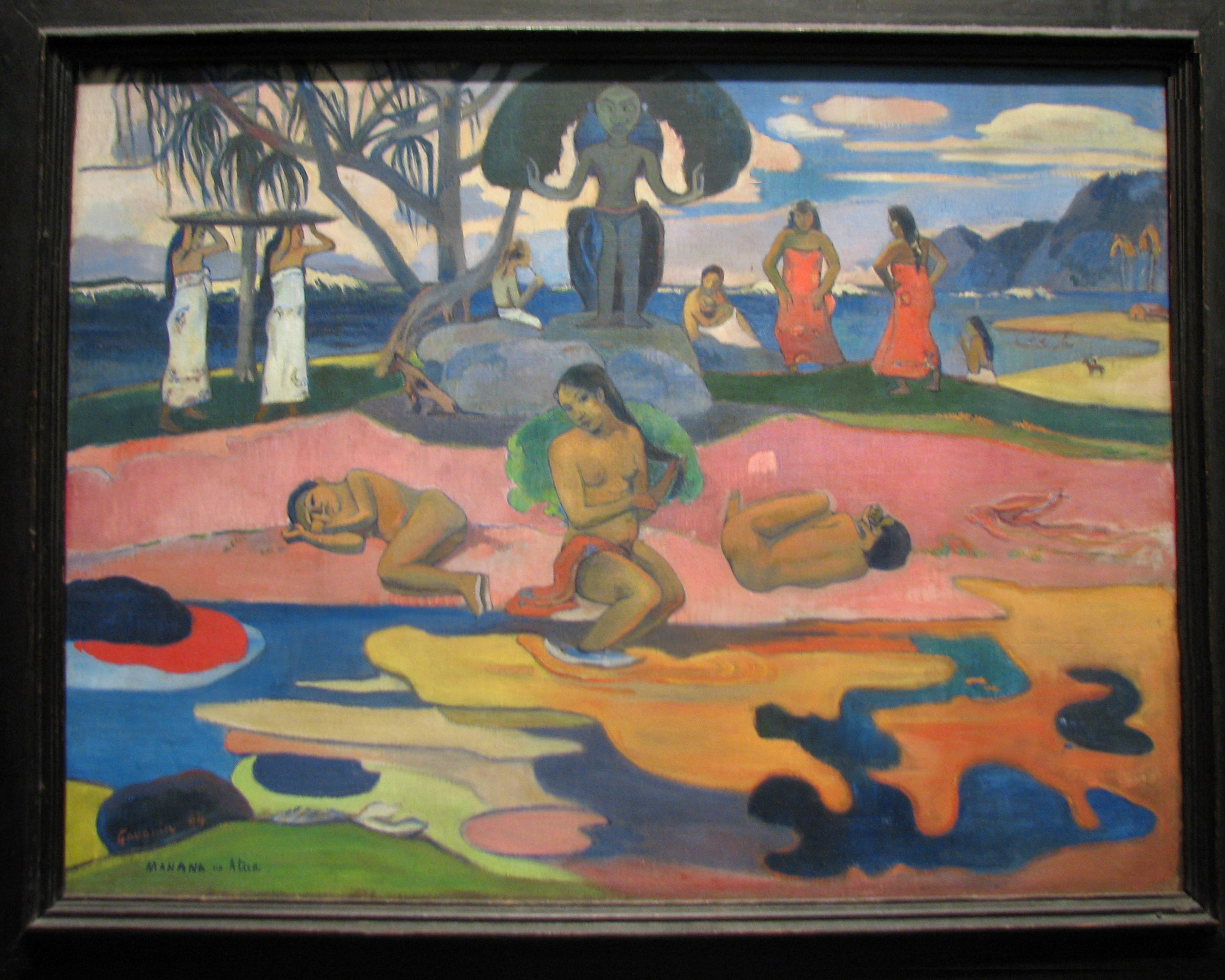
1894, Oil on canvas, 26 7/8 x 36 in. (68.3 x 91.5 cm)
Helen Birch Bartlett Memorial Collection, Art Institute, 1926.198
 1894, Oil on canvas, 26 7/8 x 36 in. (68.3 x 91.5 cm) Helen Birch Bartlett Memorial Collection, Art Institute, 1926.198 |
|
(From Quick Facts) "Gauguin left his home in France to live and work in the Polynesian island of Tahiti in the South Pacific. Although small in size, this painting appears monumental, and recalls great religious frescos. However, this work of memory and imagination was painted on a trip back to Paris. The painting is divided into three zones. A sculpture of a god looms in the background landscape. The three female figures at the edge of the pool are in a middle zone, while the mysterious lower zone represents a sacred pool that reflects 'the essence of form, color.'"
(From info card) |


